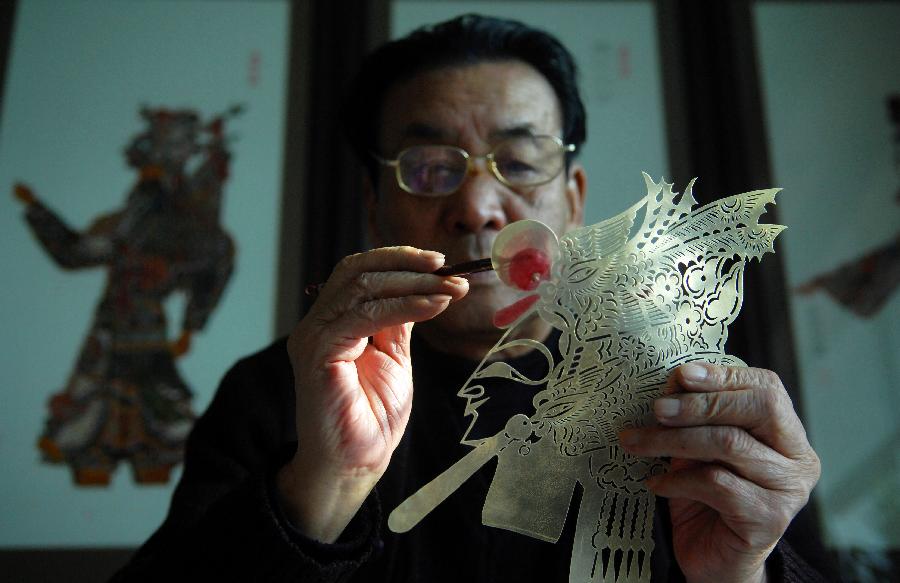Program trains inheritors to combine skill, new knowledge

Yu Zhensheng, an inheritor of puppet carving, colors a shadow puppet. Recently, the Ministry of Culture launched a training program to help inheritors understand traditional Chinese culture and changing social demands, thus better fulfilling their responsibility.
Recently, scholars praised a training program for inheritors as a prime example of intangible cultural heritage inheritance and development. The program, sponsored by the Ministry of Culture, was held at the Suzhou Art and Design Technology Institute from April 21 to 22.
Participants said the program builds a bridge between colleges and communities. It helps colleges to improve their academic research and discipline construction while encouraging innovation.
In a keynote speech, Xiang Zhaolun, vice-minister of culture, said inheritors play a leading role in the whole process of determination, protection and inheritance of intangible cultural heritage. Their capabilities pave the way for sustainable development of intangible heritage in a changing environment, he said, adding that they are entitled to acquire new knowledge while inheriting folk art.
To empower inheritors in theory and practice, the pilot training program started in 2015. The Ministry of Culture selected 23 colleges. In 2016, the Ministry of Education joined the effort, and the program was expanded to 57 colleges. In 2017, another 21 colleges were added, and cumulatively nearly 10,000 inheritors have been trained.
The program strives to create more qualified inheritors for future efforts. It deepens inheritors’ understanding of traditional Chinese culture, local ethnic culture, and the technique and evolution of cultural heritage. It keeps them up to date with industrial dynamics at home and abroad, and also transformation of aesthetics and social demand due to change of times. It equips them with expertise in terms of culture, art and material, and the ability to utilize new tools and methods.
Zhao Gang, director of the School of Arts and Crafts from the institute, said the program focuses on “what the master cannot teach.” This is not intended to alter the inheritors’ core competencies, but to broaden their horizons, raise their confidence in the value of heritage, and enable them to better fulfill their responsibility. He added, “To some extent, the program can also attract young people.”
Wang Min, director of the Xinjiang Center of Intangible Heritage Inheritance, said inheritors need to know about the culture behind their inherited crafts, and find the niche to satisfy current needs with such skills.
She recommended that authorities promote intangible heritage via various media and establish communication platforms, which facilitates sustainable development of traditional craftsmanship. Inheritors can make their expertise even more influential by learning about the present environment and cultural requirements, she added.
People’s needs and lifestyles are changing with economic and social development. “Changing lifestyles deprive many intangible heritage of the basis of their existence,” said Xu Yiyi, a history professor from Nanjing University. He said Chinese people, in an effort to pass on tradition culture, can live in an elegant and environmentally friendly manner as they did in ancient times if possible. Intangible heritage will thus come back to life.
Xiao Fang, a professor from the School of Sociology at Beijing Normal University, noted that in handing down intangible heritage, essence must be preserved. Innovation is also necessary. In this way, it can meet daily needs and gain acceptance of the public.
WU NAN, WANG GUANGLU are reporters at the Chinese Social Sciences Today.

 PRINT
PRINT CLOSE
CLOSE